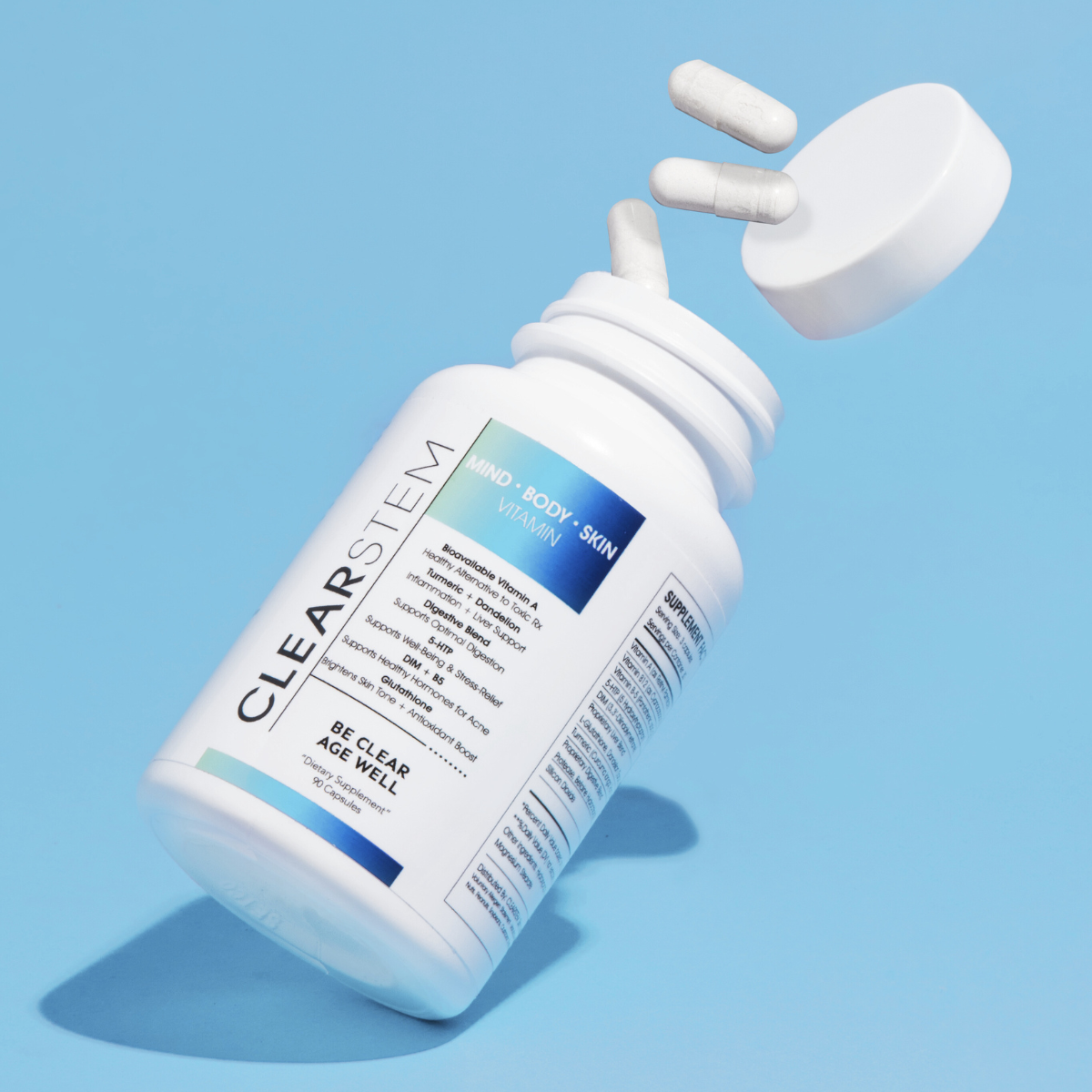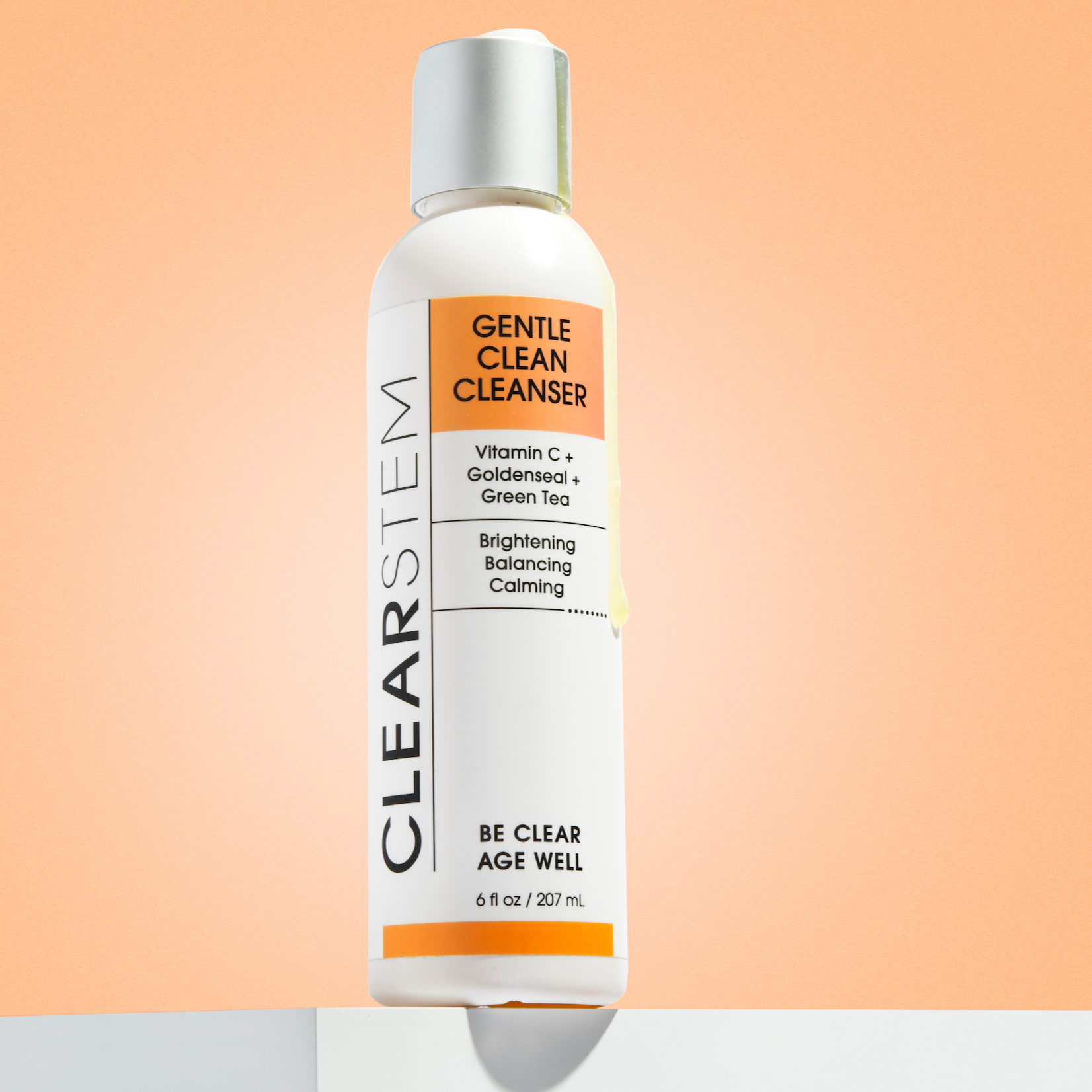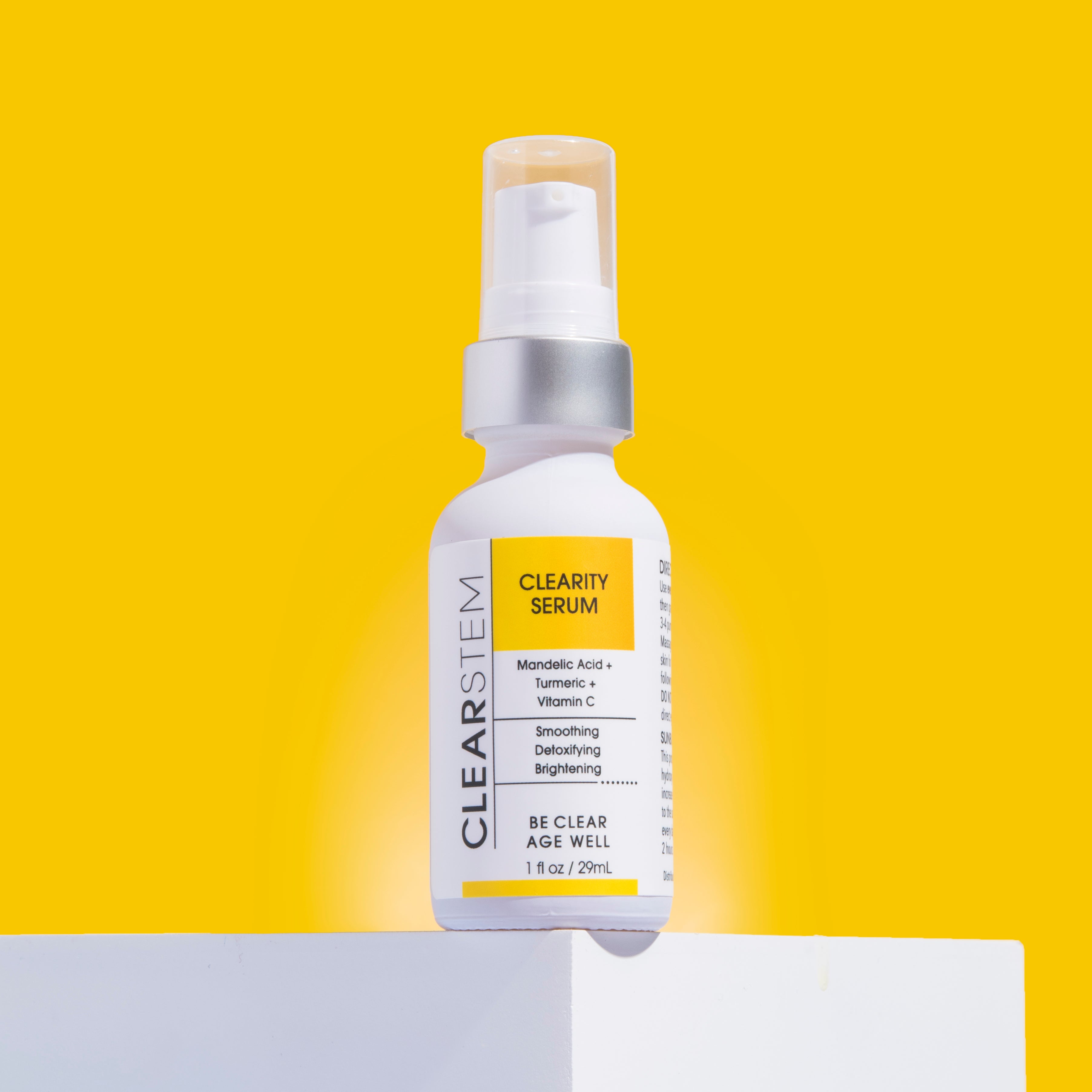Menopause is most simply defined as the permanent cessation of menstruation. But anyone who's reached this life milestone will likely tell you that it’s not that simple. Menopause can cause changes in every part of your body and your life, from sleep quality to hormone balance to, perhaps unexpectedly, skin health.
The good news is that menopause and skin changes don’t have to exist in opposition. This article will help clarify what to expect from menopause skin changes and how to adjust your skincare routine to incorporate gentle anti-aging ingredients while you enter into this new chapter with confidence.
Changes Associated with Menopause
This stage of life is experienced very differently from person to person. The age of menopause and the speed at which the transition takes place are unpredictable, but there are a few common symptoms associated with it:
- Hot flashes and night sweats
- Change and/or ending of menstrual cycle
- Mood fluctuations
- Skin dryness and thinning skin
- Sleep disruption or insomnia
This list is by no means exhaustive but represents the most frequently occurring symptoms of menopause. However, any drastic hormonal change has far-reaching impacts on many parts of the body, including your skin. Whenever your hormones fluctuate, it can trigger your skin to behave differently. This is the same reason teenagers deal with more acne, as their hormone levels spike and fluctuate during puberty.
Let’s take a closer look at the specific ways in which menopause might affect your skin.
How Does Menopause Change Your Skin?
Our hormones influence just about every bodily system and govern countless physical processes. While most discussions of menopause surround the impacts on the reproductive system and the most conspicuous side effects like insomnia and hot flashes, there are many more less-frequently talked about effects, notably when it comes to dermatological health.
These are the three key elements to understanding skin changes during menopause:
Skin Dryness
Estrogen is an extremely important hormone for the maintenance of supple, soft skin. As estrogen levels fluctuate during menopause, it can interfere with the normal production of sebum (our skin’s natural oil) and cause skin dryness.
To address the skin’s reduced ability to hold onto moisture during menopause, you can introduce a super hydrating moisturizer into your skincare routine. Try our HYDRAGLOW™ Stem Cell Moisturizer for noticeably smoother skin or HYDRABERRY™ Moisture Mask for extra luxurious moisturizing power.
Loss of Skin Elasticity and Bounce
A study from 2004 investigated the common assumption that menopause results in less elastic skin. The researchers found that post-menopause, a woman can expect to lose 0.55% skin elasticity per year. This is also thought to be due to hormonal changes, as this same effect was reversed in women participating in hormone replacement therapy (HRT).
But when it comes to bounce and elasticity in our skin, that’s also largely related to collagen production. Case in point, one study found that women may lose up to 30% of their skin’s collagen content in the first five years of menopause.
At CLEARSTEM, we offer a natural collagen stem cell serum that helps you maintain your skin’s elasticity with high-quality ingredients.
Sensitivity
While it may not be a symptom everyone experiences in menopause, some people find their skin becomes more sensitive during the different stages of menopause. To understand why menopause can make your skin more sensitive, we first need to understand the function of the skin’s acid mantle.
The skin’s outer layer, known as the stratum corneum or, more commonly, the skin barrier, generally maintains a pH level of around 5.5 (slightly acidic). This helps prevent bacterial infection and maintains a strict distinction between the outside world and the sterile environment inside the body.
The American Academy of Dermatology suggests that around age 50, the skin’s pH can fluctuate, which can lead to a weakened skin barrier and, therefore, increased potential for irritation. Browse our collection of skincare for sensitive skin to help maintain the integrity of your acid mantle during menopause.
Redness, Bruising, and Impaired Healing
The thinner skin associated with menopausal women has several downstream effects. These include the increased potential for bruising, an increased timeline for wound healing, and lower collagen production.
Menopausal women often experience redness from skin flushing, associated with the well-known symptom known as “hot flashes.” The same sensitive skin products mentioned earlier will avoid further impairing your skin’s function.
Can You Still Get Acne During Menopause?
For most of dermatology’s history, acne was considered a hurdle of adolescence. This is for good reason: up to 90% of adolescents experience at least mild acne in their pubertal years. However, more attention in recent years has been paid to adult acne, particularly the hormonal variety.
Hormonal changes cause adolescent acne, so it makes sense that adults experiencing hormonal shifts related to pregnancy, birth control, or thyroid issues could experience acne as well. Menopausal acne falls into this category of adult hormonal acne.
The hormonal changes during menopause can lead to breakouts, even if you’ve had clear skin since your teen years. Such a shift may leave you wondering about what’s causing the sudden shift. There are a few potential causes of this potentially surprising skin situation:
Regardless of the reason, skincare has evolved to treat more than teen acne. There are plenty of solutions for adult acne, including menopausal acne, focused on both prevention and treatment.
Building a Regimen for Menopausal Skin
Taking care of your skin during menopause is all about nourishing it with quality ingredients and taking care of it from the inside out. Of course, when acne arises, you’ll want to use the best products available to heal it—but you can also take steps to prevent it.
That’s nothing CLEARSTEM’s product line can’t handle.
Our products include a hormonal acne supplement featuring vitamin A and vitamin B5, which takes a non-toxic approach to optimizing any hormonal levels to prevent acne. Acne doesn’t start at the skin, so why should your acne regimen? It’s a systemic issue that requires a holistic approach.
Additionally, as we’ve seen, menopausal skin is often sensitive skin. Gentle skincare products formulated without toxins are friendlier to these sensitivities. CLEARSTEM’s line of products for both acne and aging is designed with sensitive skin in mind. From stem cell moisturizer to our HYDRABERRY™ Moisture Mask, you can restore your skin barrier in harmony with your body’s changing hormone levels.
Another ingredient to consider for a menopausal skincare regimen is collagen. The decreased collagen content of skin during menopause can interfere with wound healing, resulting in post-inflammatory hyperpigmentation if you do suffer an acne breakout. To address concerns like these, browse our collection of products designed to naturally treat dark spots and melasma.
The Importance of Sunscreen
Sunscreen is not just for beach days. The entire dermatological community seems to agree that regular application of SPF is one of the best ways to keep your skin looking vibrant, healthy, and blemish-free. Plus, it also prevents skin damage and further skin aging for menopausal women.
Sun damage exacerbates the sensitivity associated with menopause, disrupts the skin barrier, leading to acne, and causes dryness. Try a sheer broad-spectrum sunscreen from CLEARSTEM, an essential part of any anti-acne or anti-aging routine.
Step Into Menopause Confidently with CLEARSTEM
At CLEARSTEM, we’re committed to bringing you natural skin care products designed with your full body’s health in mind. By avoiding toxins and focusing on a holistic approach to skin concerns, you can use our products confidently and see the results you’re hoping to achieve.
Acne, menopause, and skin changes are all natural parts of being human. Even so, artificial (and potentially detrimental) solutions abound in our culture, and they’re often heavily promoted by advertising and social pressure. Why not fight your menopause symptoms directly at the source? CLEARSTEM products are effective and non-toxic, offering the best of both worlds.
Whether you’re experiencing hormonal acne, dryness, or a few more lines around your eyes than you seem to remember from your reflection, it’s all worth celebrating and embracing in this season of life. Explore our line of skincare products to care for your skin and nourish it with the healthy, natural ingredients it needs. When you choose CLEARSTEM, you choose a company founded by women, where our products are designed with women in mind—in every life stage.
Are you ready to heal your skin from within?
Sources:
Australasian Journal of Dermatology. Menopause and the skin. https://onlinelibrary.wiley.com/doi/full/10.1046/j.1440-0960.2001.00524.x?casa_token=-GlvjtVogy8AAAAA%3AllShjgl5980riglBq7dtiqk4-PicGIGFVsuZfHqIQaxIo-ucaTZeymowPRUSYWQ-jktonKk1bLrI
World Health Organization. Menopause. https://www.who.int/news-room/fact-sheets/detail/menopause
International Journal of Women’s Health. Menopausal Acne – Challenges and Solutions. https://www.tandfonline.com/doi/full/10.2147/IJWH.S174292
American Academy of Dermatology Association. Caring for your skin during menopause. https://www.aad.org/public/everyday-care/skin-care-secrets/anti-aging/skin-care-during-menopause
Journal of the American Geriatric Society. Effects of aging, menopause, and hormone replacement therapy on forearm skin elasticity in women. https://pubmed.ncbi.nlm.nih.gov/15161459/
WebMD. Menopause and Dry Skin: The Hormone Connection. https://www.webmd.com/beauty/features/menopause-dry-skin-hormone-connection
Journal of Clinical and Aesthetic Dermatology. Understanding the Epidermal Barrier in Healthy and Compromised Skin. https://www.ncbi.nlm.nih.gov/pmc/articles/PMC5608132/
Brazilian Society of Dermatology. Adult female acne: a guide to clinical practice. https://www.ncbi.nlm.nih.gov/pmc/articles/PMC6360964/











